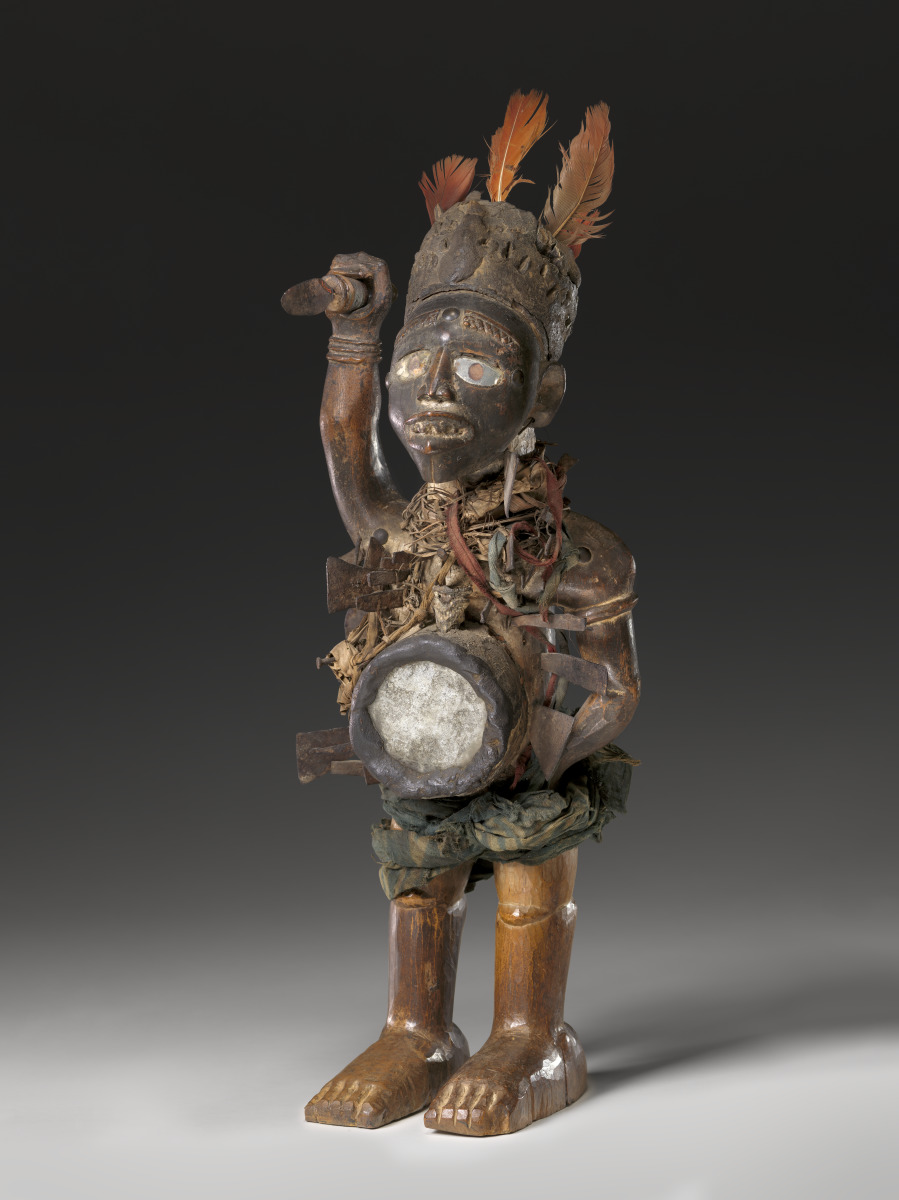
Nkisi (Power Figure) (Primary Title)
Unknown (Artist)
Kongo minkisi (singular: nkisi), used to invoke supernatural powers, have long held a place of honor as the most potent of African art works. Once carved, this wooden figure would have been charged with its powers by playing ritual substances in the mirror-covered projection from the stomach and the resin casing that crowns the head like a turban. Large figures such as this are owned by diviners, who consult on behalf of clients who come to them for help.
When used in rituals, minkisi wield potent psychological medicine. They are frequently called upon to identify causes for disease, to protect against evil, to seal agreements between disputing parties, or to enforce legal judgments.
The act of driving an iron blade into the figure stirs up the spirit of the nkisi, activating its force. Those involved in settling a dispute and convicted criminals fear the power of the nkisi should they fail to abide by the agreement or legal judgment that was sealed by driving the blade into the figure. This figure’s aggressive stance, jutting chin, bared teeth, and threatening gesture with a knife all underscore its invisible powers.
This power figure is from the town of Mayumba in coastal Gabon, home to the Vili subgroup of the Kongo culture. It was collected by Robert Visser, a German merchant, sometime before 1903.
Some object records are not complete and do not reflect VMFA's full and current knowledge. VMFA makes routine updates as records are reviewed and enhanced.

